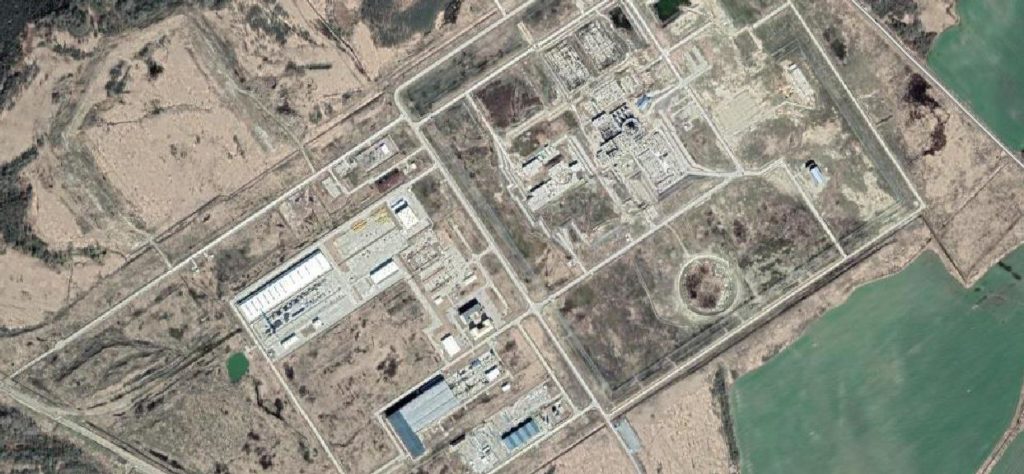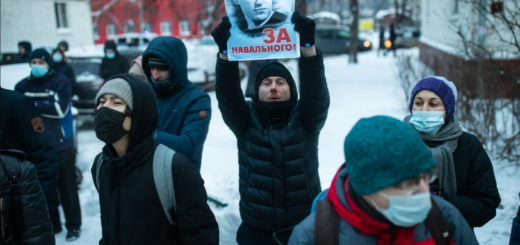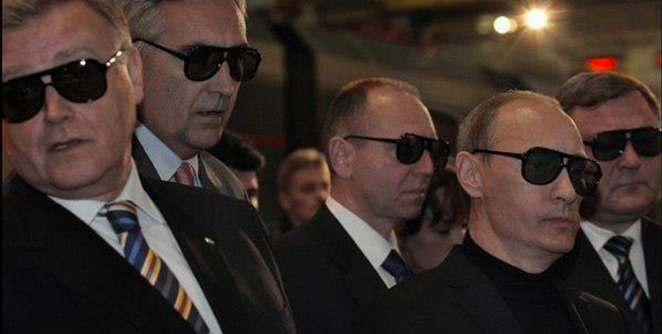How companies from Ukraine and the EU helped Russia build a threat to Lithuania’s national security
The HBO series “Chernobyl” was watched by the citizens of Lithuania a little differently than by the rest world. The scenes in Pripyat, where the emergency station workers lived, were filmed in one of the sleeping areas of Vilnius, and from the outskirts of the Lithuanian capital you can see the cooling towers of the new Belarusian nuclear power plant, which is currently being constructed by Rosatom.

The Scanner project tells how at the height of the conflict in the Donbass, Ukraine helped Russia build the Belarusian nuclear power plant (also known as Ostrovets NPP) and how Lithuania was unable to prevent this project, but now threats it as a threat to national security and plans to fight it with sanctions.
Arms race via “peaceful atom”
In the early 80s, construction of a new city and a nuclear power plant began in Lithuania near the Belarusian border. It was planned to launch four RBMK-1500 reactors at Ignalina NPP – they had the same design as the ones at the Chernobyl station but were one and a half times more powerful. The first power unit was launched two years before the Chernobyl disaster, on May 1, 1984.
The launch of the second reactor had to be postponed, the construction of the third power unit was stopped due to protests, and the fourth remained ink on paper. In 2001, Lithuania agreed to the demands of the European Union – EU membership in exchange for a complete shutdown of the power plant. In 2004, the first reactor was shut down; in 2009, the power plant stopped generating energy.

Lithuania began to think about replacing the Ignalina NPP with a new station in 2005; in 2007, President Valdas Adamkus signed a law marking the official start of the project.
But soon, the future Visaginas NPP received a competitor. Rosatom decided to build a new nuclear power plant near the city of Neman in the north-east of the Kaliningrad region, 10 kilometers from the Lithuanian border. It was planned to build two VVER-1200 reactors with a total capacity of 2388 MW, with the first being launched in 2020.
At first, local Lithuanian businesses wanted to invest in the construction of their power, but later an international competition was held. It was won by the consortium of Japanese Hitachi and American General Electric. The launch of the 1350 MW ABWR reactor was also planned for 2020.
The director of Rosatom programs and the curator of the construction of the Baltic NPP spoke about the consortium of the competitors: “We are extremely concerned about the construction of such a reactor in the center of Europe. Reactors of this type were built by only one country, Japan. The whole world has refused to use them. They are very cheap, but very dangerous.”

His Lithuanian opponent, head of the parliamentary committee Rokas Zhilinskas, countered with the following: “Before conducting public discussions, the Russian side should invite the IAEA mission, which will evaluate the chosen site and provide Lithuania with official answers to the substantive questions regarding the site’s selection criteria, its resistance to earthquakes and impact on the Neman basin, transportation of nuclear waste across the Baltic Sea, preparation for possible accidents and evacuation on Lithuanian territory, and many other questions that were asked repeatedly by Vilnius but left unanswered by Moscow.”
The Lithuanian project was the first to stall. In March 2011, an extremely strong earthquake off the coast of Japan caused a tsunami. An accident occurred at the Fukushima NPP – the most severe nuclear disaster after Chernobyl. This event fueled environmental protests in Lithuania. In October 2012, 64.77% of the participants of the consultative referendum opposed the construction of a new nuclear power plant in the country. In 2016, the initiator of the construction of the Visaginas NPP, former Lithuanian Minister of Energy Arvydas Sikmokas, called the project “dead”.
In the Kaliningrad region, the project progressed more successfully – at least, for an external observer. In 2010, with the participation of Sergei Kiriyenko, the then head of Rosatom, the first stone was solemnly laid. Active construction of the Baltic NPP began in February 2012 with the filling of its foundations. Rosatom factories began assembling the reactors.
The capacity of the new station exceeded the needs of the Kaliningrad region in electricity by several times. It was only possible to recoup the costs of its construction by selling energy to neighboring countries, primarily to Lithuania and Poland.
However, the Lithuanian conservative government was concerned about the country’s energy dependence on Russia and began to reduce it since 2008: energy bridges from Sweden were laid along the bottom of the Baltic Sea and the construction of a terminal for receiving liquified gas was started in Klaipeda. The third intended measure was the construction of the Visaginas NPP. Relations between Russia and Poland became more complicated after the Tu-154 crash near Smolensk in 2010, in which President Lech Kaczynski died.
Due to these circumstances, the construction of the Baltic NPP was frozen. “Rosatom” and the curator of the construction site near the Neman Sergey Boyarkin switched to a new project: the promotion of a nuclear power plant in Belarus.
Baltic NPP and Belarusian NPP, satellite image
“One of the reasons for stopping the construction of the Baltic NPP was the change in our structure of electric networks: earlier, electricity from Vilnius and Kaunas was sent to the Kaliningrad region, and from there it went to Klaipeda. We’ve built direct networks from Kaunas to Klaipeda. The Kremlin realized that it was risky to build a power station without a market, and decided to move it to Belarus, where there is a market”, says Andrius Kubilius, member of the European Parliament and Prime Minister of Lithuania from 2008 to 2012.
The same thing but for others’ money
In 2008, Belarus also decided on the construction site of its nuclear power plant. It is located on the border with Lithuania, 18 kilometers from the city of Ostrovets. In 2011, President Alexander Lukashenko agreed with the then Prime Minister of Russia Vladimir Putin on the participation of Rosatom and a $10 billion credit line for the construction of the station.
“At first, the Belarusian NPP was just talk. But then they started to do something on the site near Ostrovets”, recalls Andrius Kubilius, Member of the European Parliament and Prime Minister of Lithuania from 2008 to 2012. “I was there in 2010. Back then, we were still in good relations with the Lukashenko regime. We went there during a traditional bicycle trip through the castles of the Grand Duchy of Lithuania. We were shown everything, and it was clear that the whole construction was smoke and mirrors. We regarded both projects, the Baltic and Ostrovets NPPs, as propaganda against the construction of the Visaginas power plant.”
As of January 1, 2019, Belarus has used $3.4 billion out of the $10 billion it received. According to the agreement, the country should begin paying off the debt after the launch of the first power unit, but no later than in April 2021. The interest for the first half of the debt is fixed at 5.23% per annum. For the second half, it’s floating: “six-month LIBOR in dollars [1.2% on the day of publication] plus 1.83% per annum”. Its maturity is 25 years from the date the credit line was opened, that is, since 2011.
Now Lukashenko insists on revising this agreement – in his opinion, payments should be reduced to 3% per annum, and the repayment period should be delayed by 10 years.
If the station was launched this year, Belarus would pay at least $353 million to pay off the debt and interest.
“The Baltic power plant was built with Russian budget money, whereas the Ostrovets NPP — on the loan issued to Lukashenko, which should be repaid even in the absence of profit from the station,” says Andrius Kubilius.
No matter if the station will be launched or not, repayment of the loan will automatically begin next April.
The market is vanishing
The construction of a nuclear power plant near Vilnius provoked protests in Lithuania: the country’s authorities recorded all violations during the construction in detail and called on the neighboring countries to refuse to buy electricity from this NPP in the future.
In 2017, the Lithuanian government recognized the construction of Belarusian NPP as a threat to national security. A year later, President Dalia Grybauskaite, following a meeting with Polish Prime Minister Mateusz Moravecki, said that both countries had a common position: not to buy energy from the Belarusian nuclear power plant.
In March 2020, Ukrainian deputyfrom the “Servant of the People” faction Sergei Nagornyak introduced a bill to ban electricity imports from Russia and Belarus, as these countries have not ratified the European Energy Charter, and also in order to protect Ukrainian electricity producers that “do not work at full power” This initiative is not directly related to the construction of the Belarusian NPP, but Ukraine’s possible refusal to import electricity will inevitably affect the prospects for the plant’s payback.
In February 2020, the party of Lithuanian conservatives together with representatives of the party of liberals and signatories of the independence act held a congress of the movement “Against Ostrovets NPP” in the Lithuanian parliament. The movement aims to stop the construction of the nuclear power plant.
“The Ostrovets NPP poses a threat to the security of the region. Today it is not so important to discuss what was or was not done up to this point. Today it is more important to do everything so that this nuclear power plant does not launch. We need activity – both from ordinary citizens and from politicians”, said Viktoras Prantzketis, the Speaker of the Lithuanian Parliament.
At the congress of the movement, they drafted the texts of the petition to the European Parliament and the letter to the President of Belarus Alexander Lukashenko demanding that the station not be launched. At the time of publication of this article, less than 9 thousand people have signed the petition.
In addition to Lithuanian politicians and public figures, Belarusian opposition and the former Minister of Foreign Affairs of Ukraine Pavlo Klimkin (he held a ministerial post from June 2014 to August 2019 under President Poroshenko) also took part in the congress of the movement. Pavel Klimkin also said that the Ostrovets NPP is a dangerous project.
“When it comes to nuclear safety, emotions always rage. For the countries most affected by the Chernobyl disaster, this is more than politics. Therefore, the international community should determine the vision of what should be done to ensure all the necessary nuclear safety standards for the nuclear power plant under construction in Belarus. Before playing politicians, it is necessary to agree that all the requirements for strengthening security formulated by European institutions must be met before the launch”, Klimkin stated.

Klimkin said that Belarus needs to offer a strategy that will contain elements of assistance in the implementation of all security measures and sanctions in case they are not implemented. That is, to formulate such an offer for Belarus that it won’t be able to refuse.
However, Ukraine may also find itself in the situation when it will have to abide to the restrictions.
Supplies to Russia under Russian shelling
In February 2015, the Ukrainian city of Kramatorsk was shelled. An attack on the airfield and residential areas was carried out using the Smerch multiple launch rocket system, equipped with cluster munitions. According to the OSCE report, 17 people were killed and 60 were injured.
The shelling of the city caused concern among those in charge of the construction of the Belarusian nuclear power plant. They publicly reported that equipment deliveries from Kramatorsk to Russia – from the Energomashspetsstal plant to the Volgodonsk branch of Atommash, where nuclear power units are assembled – will be completed on time.
More than half (50.01%) of the Kramatorsk plant Energomashspetsstal belongs to Rosatom through Cypriot companies, another 24.99% is owned by Maxim Efimov, who was the general director of Energomashspetsstal until November 2014, through the Cypriot company Ukrainian Machinebilding Plants M.S.
In November 2014, Maxim Efimov was elected a deputy of the Verkhovna Rada and entered the ruling faction “Petro Poroshenko Bloc”. In the current convocation he is an unaffiliated deputy.
In August 2014, shortly before the transfer of intermediate goods to Russia, Ukrainian President Petro Poroshenko awarded Maxim Efimov a state prize in the field of science for “creating high-precision equipment and manufacturing large-sized parts and equipment.”

It is noteworthy that the power units manufactured in Kramatorsk were originally intended for the failed Baltic NPP.
Ukrainian companies took an extremely active part in the work on the construction of Belarusian NPP from the very beginning, when this project was just beginning to be discussed. In 2008, the State Kiev Research and Design Institute “Energoproekt” (KIEP) developed a feasibility study for the station, which helped to approve the construction site – the one that is used today.
In addition to Energomashspetsstal, several more companies supply equipment for the nuclear power plant in Belarus. Four projects were completed by the TMM-Energobud company, which is part of the TMM holding:
— turbine pipeline in 2015;
— feed water pipelines for the second power unit in September 2016;
— sharp steam pipelines for the first block in March 2017;
— auxiliary pipelines in June 2017.
The main shareholder of TMM holding is Larisa Chivurina, the wife of Andrei Chivurin, who created the show “League of laughter” together with Volodymyr Zelensky. The Scanner project wrote about this holding in detail in the investigation about the violation of sanctions against Crimea.
Companies from other partner countries of Lithuania also participated in the construction of the Belarusian NPP.
In 2014, the British Lean Coaching Ltd won a tender for the introduction of lean manufacturing technologies at the facility.
Another British company, Norton Rose, won a tender in 2016 for the provision of legal advice on the Belarusian NPP construction project. In Lithuania, Norton Rose provided legal services to LITGAS for the purchase of gas until February 2017.
In 2016, the Russian company Aventel Rus won a contract for the supply of flow meters for the first unit of BelAES. 90% of Aventel Rus is owned by the French company Aventel France Sas.
It is noteworthy that Sergey Boyarkin, the former director of Rosatom programs and curator of the construction of both Rosatom stations, lives in the Latvian city of Jurmala and invests in the construction of a suburban village there.
Anti-atom sanctions
In March 2020, nine deputies of the Lithuanian parliament registered a resolution calling for sanctions against Rosatom, as well as initiating Lithuania’s withdrawal from the Vienna Convention on Civil Liability for Nuclear Damage of 1963, according to which nuclear power plant operators are financially responsible for incidents, but the amount insurance does not correspond to reality.
At the same time, Rosatom remains a partner of Lithuania for work at the decommissioned Ignalina NPP. It is also unknown whether Vilnius can impose its own sanctions separately from the European Union.

“Many companies were involved in the construction of the Belarusian NPP. Not everyone believed that it would be built. But more important is how the Ukrainian government will behave when buying electricity from Ostrovets. The situation changed after 2015, when we signed the Association Agreement with the European Union. Now we have an agreement that states that Ukraine will abide by the terms of the energy union with the EU. Therefore, for Ukraine this is now a huge test, a test of political solidarity with the European Union. We are monitoring this process, and I can’t say that it is completely clear to us how Ukraine will behave. But if Ukraine thinks that it can do what it wants to do, it is mistaken. Because the EU’s demand to Ukraine for deeper integration is also about how Ukraine will behave on this issue”, said Petras Auštrevičius, co-founder of the “Against Belarusian NPP” movement, to the Scanner project.
On March 20, the State Atomic Supervision Committee of Belarus announced that the Belarusian NPP was ready to import nuclear fuel to launch the first power unit of the station.







